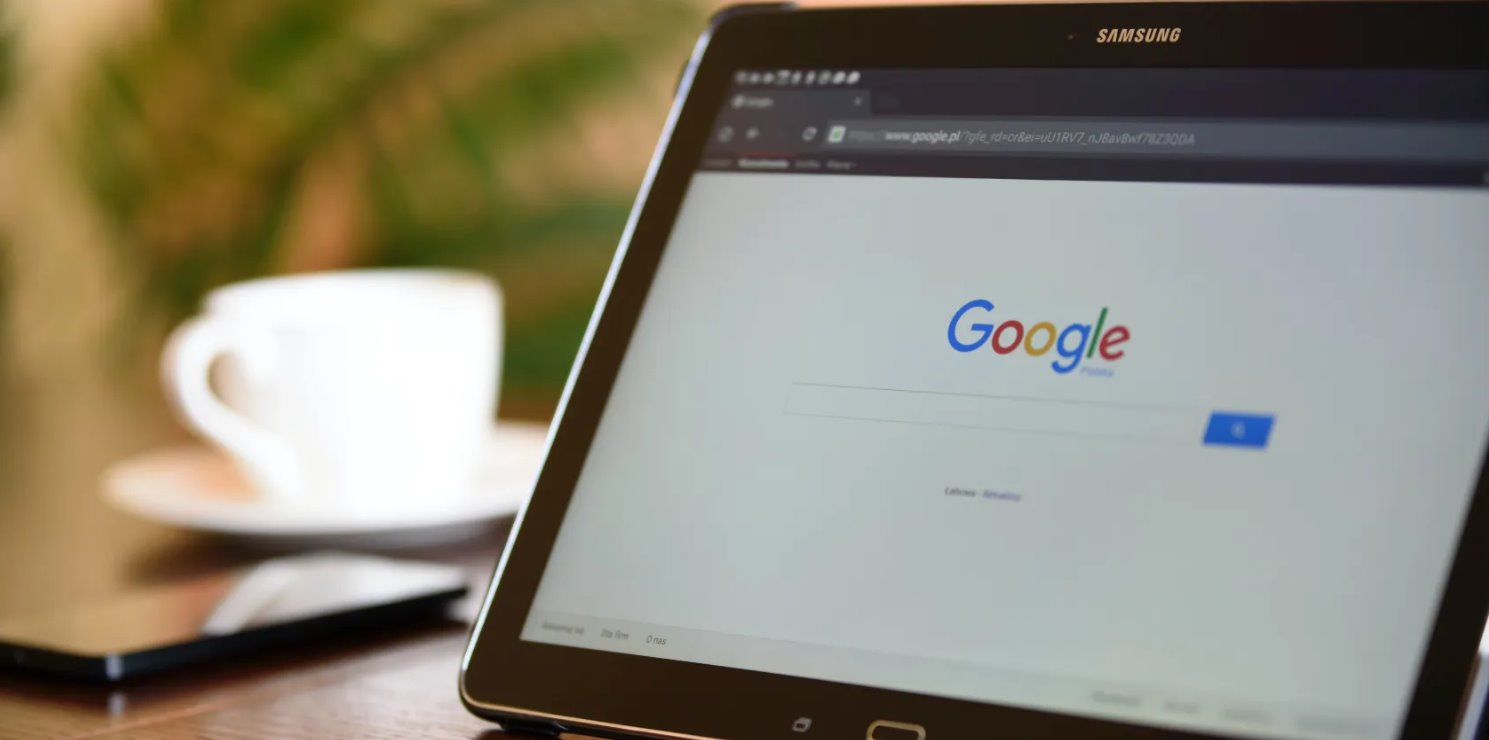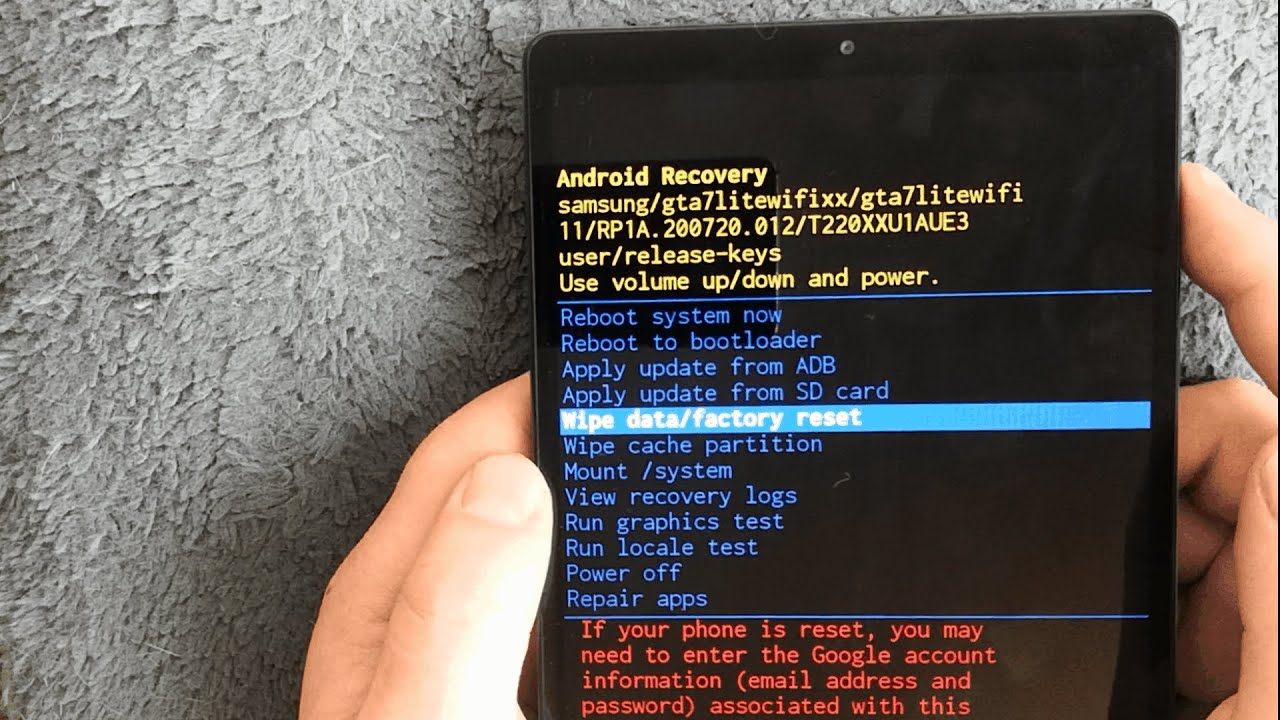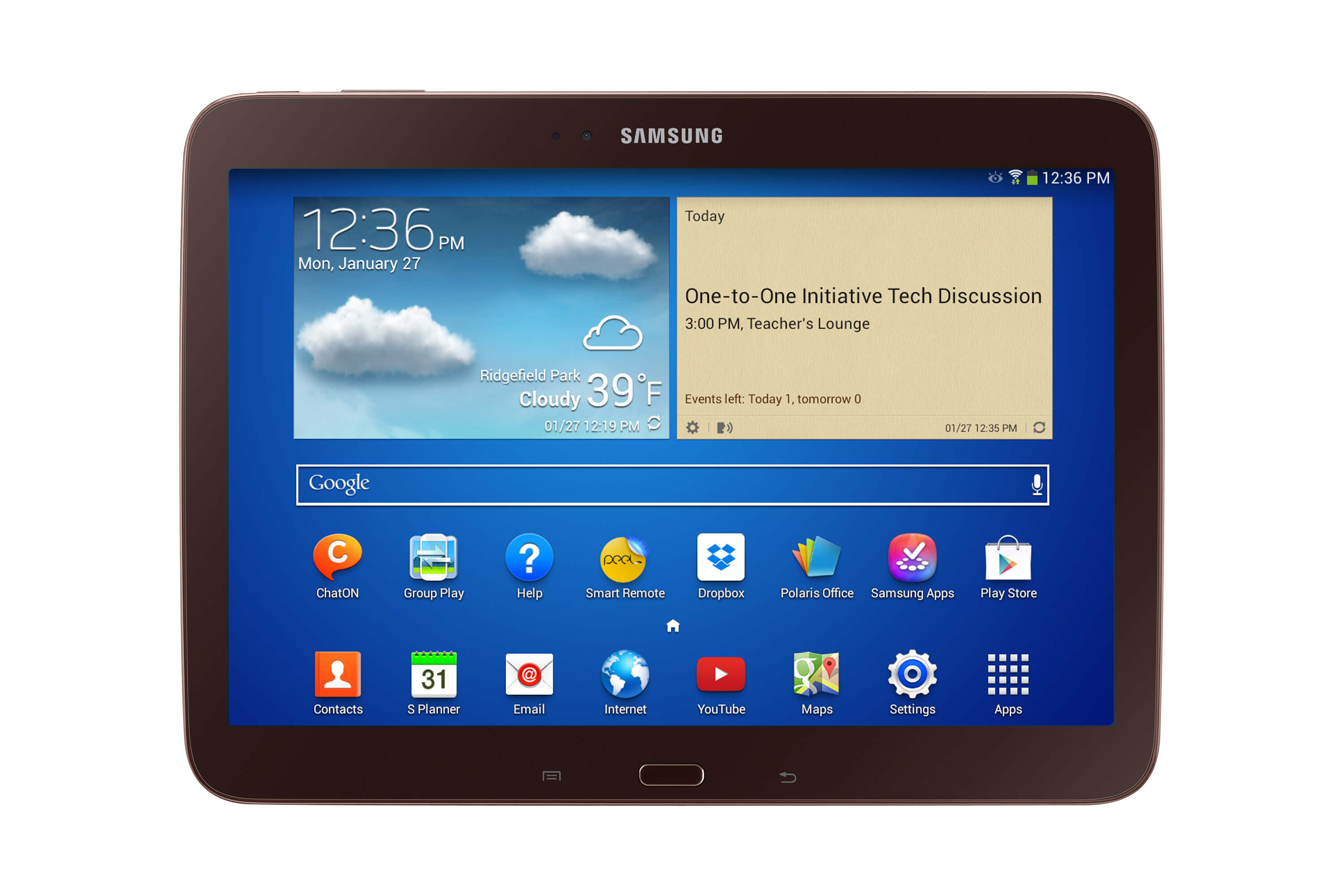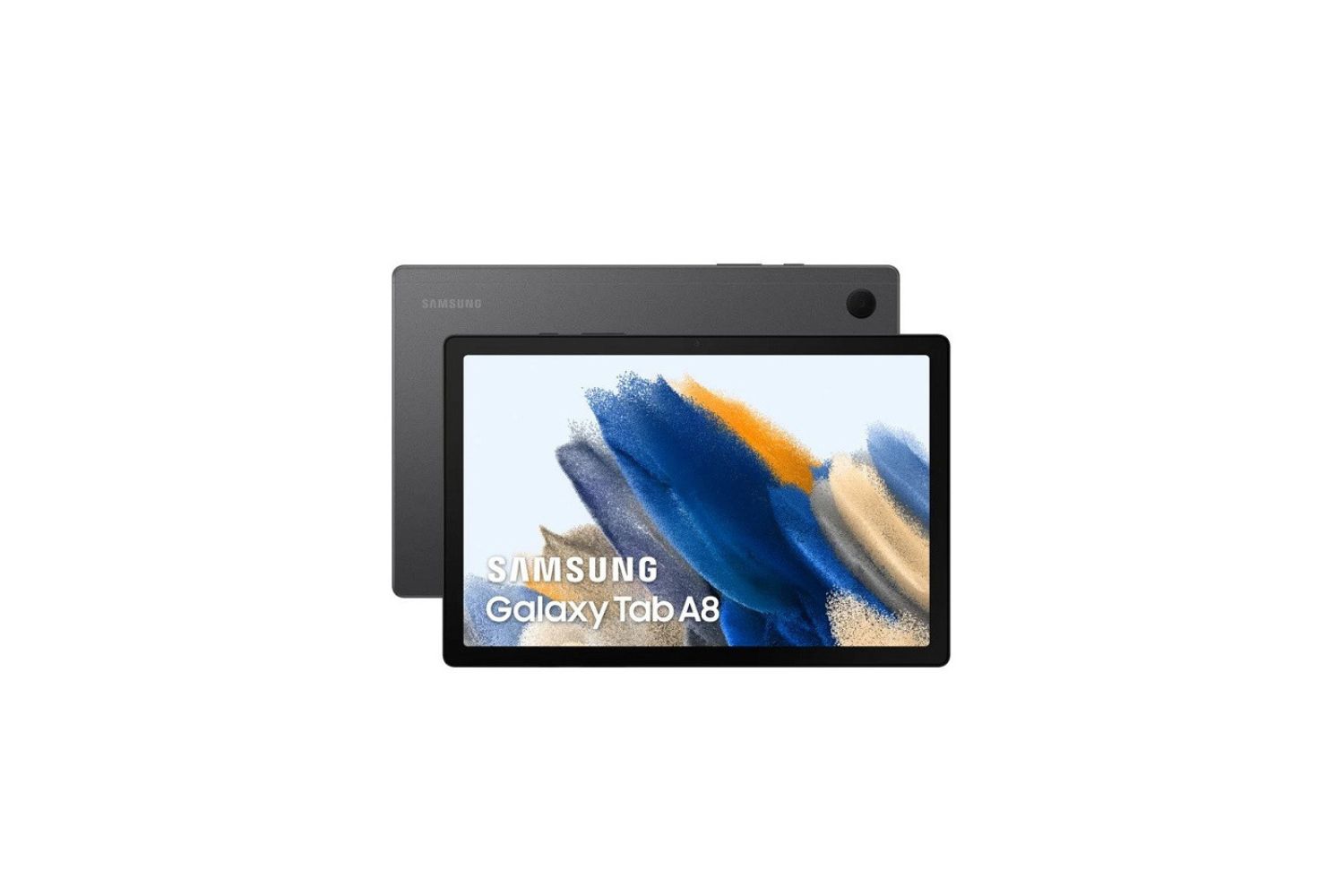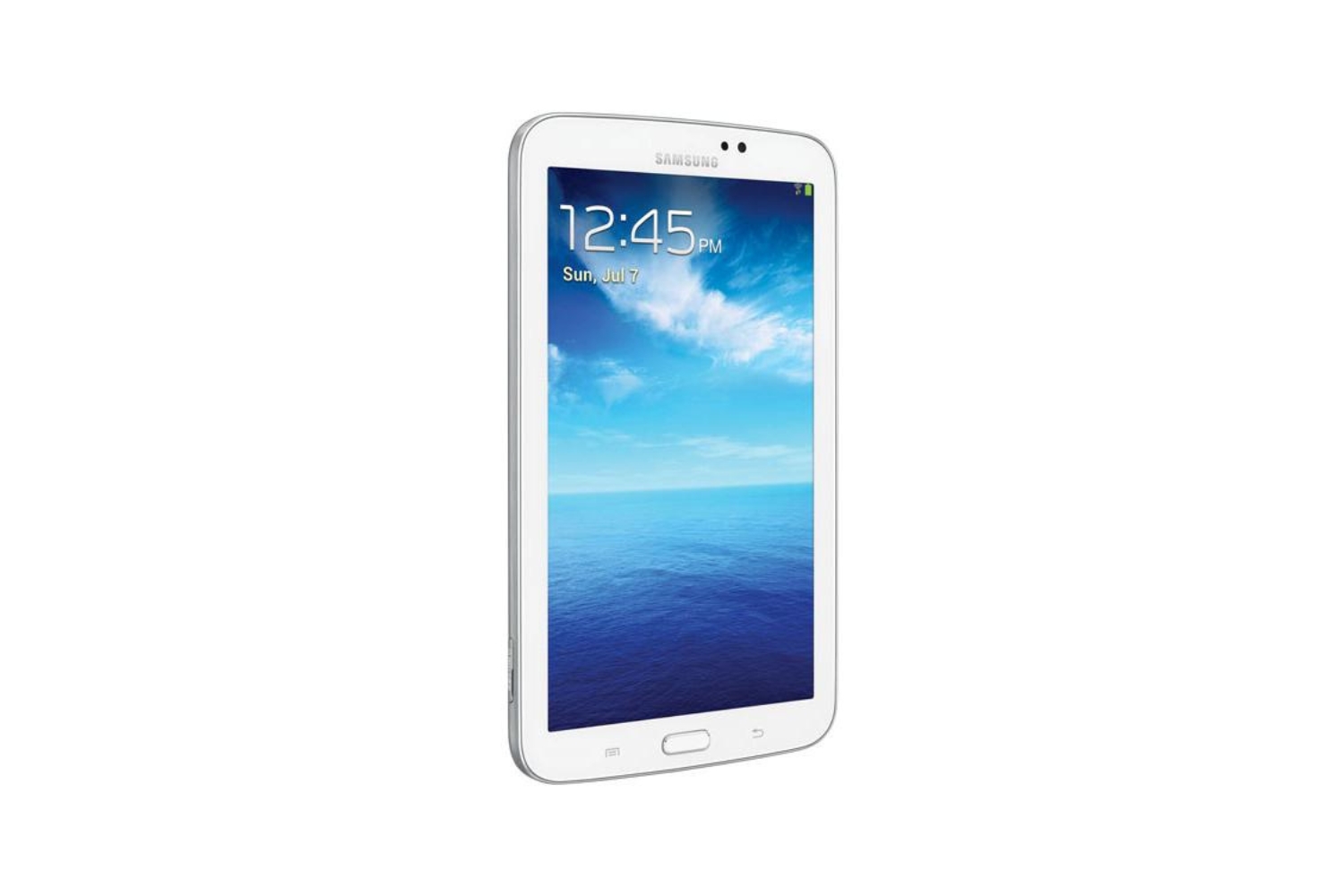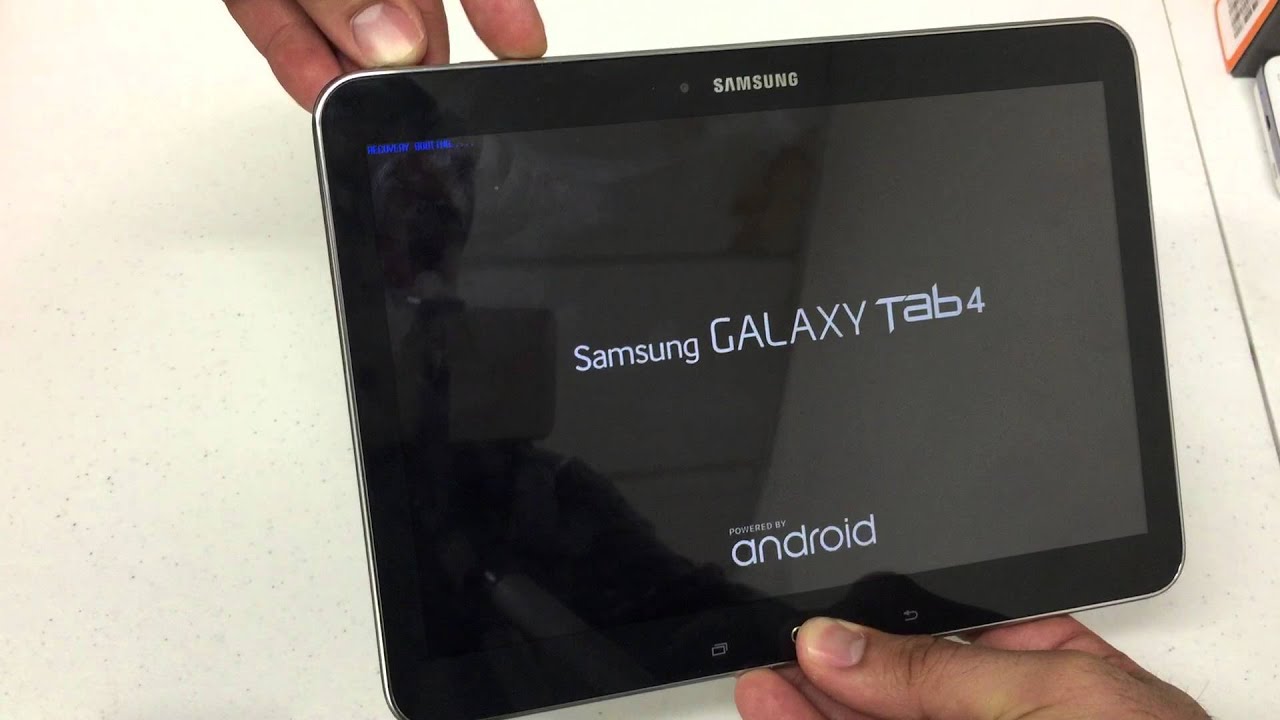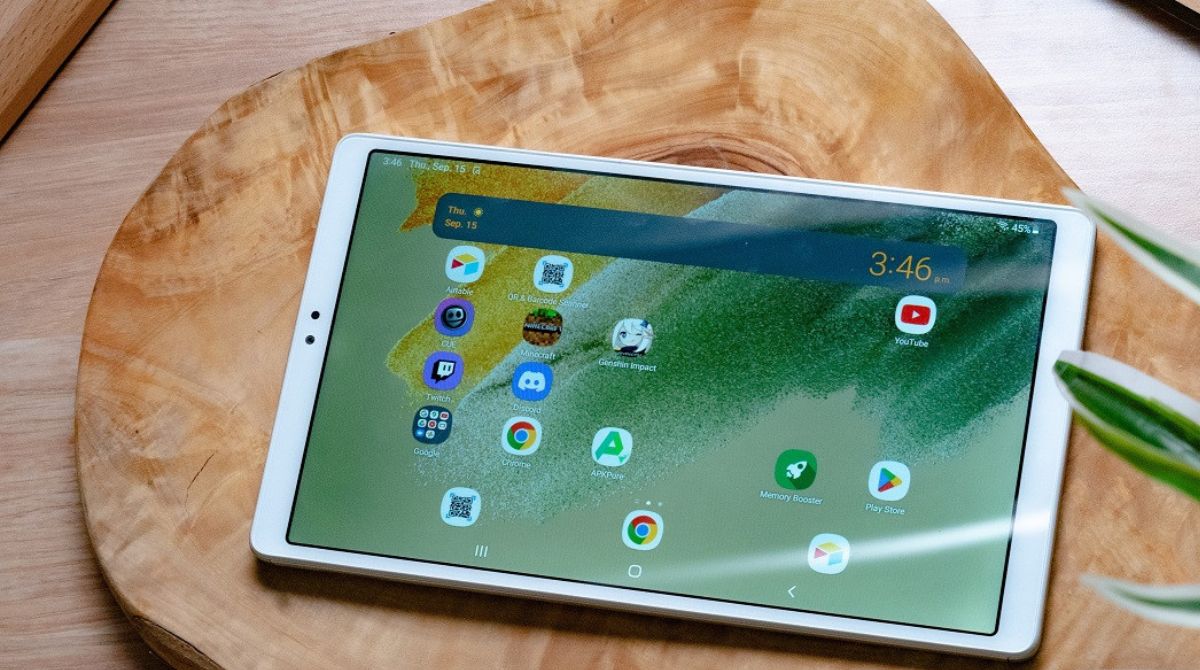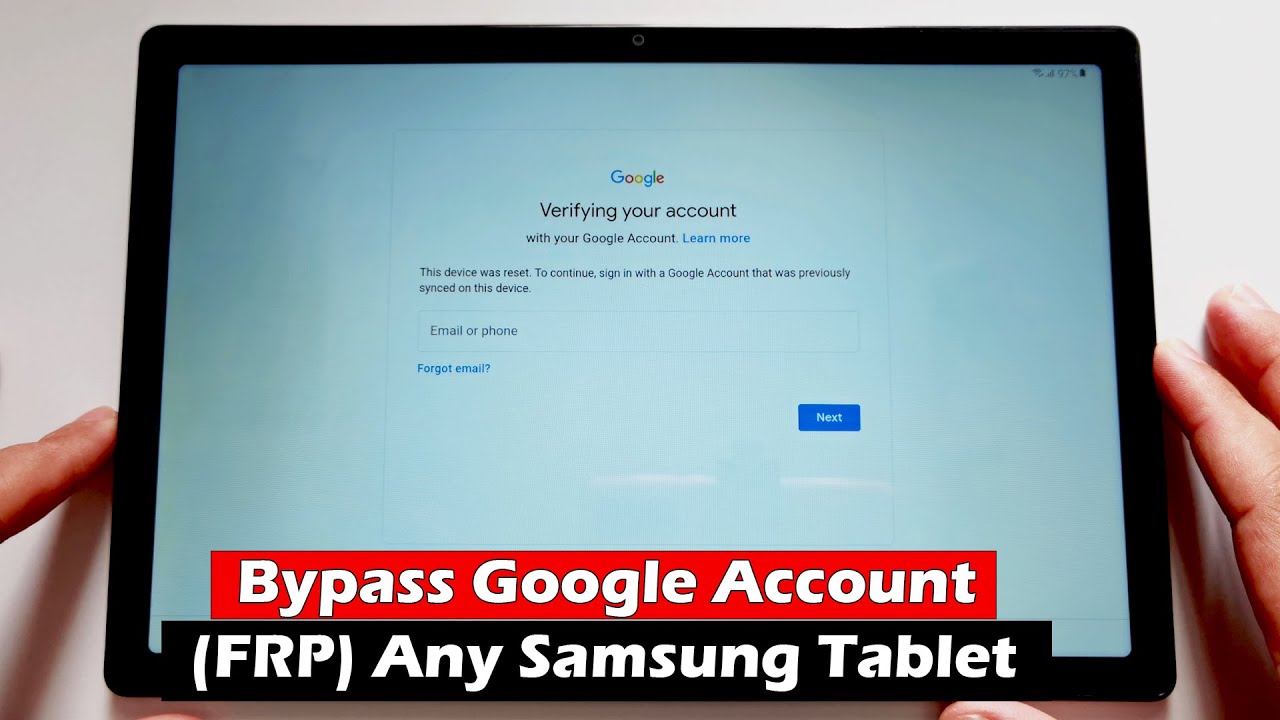Introduction
A factory reset is a process of restoring a device to its original factory settings, effectively wiping out all data and personalized settings. Performing a factory reset on a Samsung tablet can be beneficial in various scenarios, such as when you’re experiencing software issues, want to sell or give away the device, or simply want to start fresh. This process can help resolve glitches, improve performance, and ensure your personal information is erased.
Understanding how to perform a factory reset on a Samsung tablet is essential to make the most of your device. In this article, we will explore different methods to factory reset a Samsung tablet and provide step-by-step instructions.
It’s important to note that a factory reset should not be taken lightly, as it erases all data including apps, files, and settings. Therefore, it is crucial to back up your important data before proceeding with a factory reset. Once the reset is complete, the device will be restored to its original state, just like when you first purchased it.
This article will guide you through the process of factory resetting a Samsung tablet, ensuring you take the necessary precautions and providing troubleshooting tips for common issues that may arise during the reset process.
Understanding Factory Reset
A factory reset, also known as a hard reset or master reset, is a process that restores a device to its original factory settings. It effectively erases all data, settings, and applications installed on the device, returning it to the state it was in when it left the factory. This can be a useful solution for various situations, including troubleshooting software issues, removing personal data before selling or giving away the device, or starting fresh on a device that has become slow or unresponsive.
During a factory reset, all user data, including contacts, messages, photos, videos, and downloaded apps, is deleted from the device’s internal storage. This ensures that any personal information or sensitive data is no longer accessible on the device. It’s important to note that a factory reset does not affect the software or firmware of the device, as it only resets the user data and settings.
When performing a factory reset on a Samsung tablet, it’s crucial to understand that this action is irreversible. Once the reset is complete, all data will be permanently erased, and it will not be possible to recover it unless you have a backup. Therefore, it is essential to back up any important files or data before proceeding with the factory reset process.
Furthermore, it’s worth mentioning that a factory reset does not solve hardware-related issues. If your Samsung tablet is experiencing hardware problems, such as a broken screen or faulty buttons, a factory reset will not fix these issues. In such cases, it is recommended to seek professional assistance or contact Samsung’s customer support for guidance.
Now that we have a clear understanding of what a factory reset entails, let’s explore the various methods you can use to perform a factory reset on a Samsung tablet.
Different Methods to Factory Reset a Samsung Tablet
There are several methods you can use to factory reset a Samsung tablet, depending on the model and specific circumstances. Here, we will discuss three common methods that can be used to achieve a successful factory reset:
- Method 1: Using the Settings Menu
- Open the Settings app on your Samsung tablet.
- Scroll down and tap on “General management” or “System,” depending on your device model.
- Select “Reset” or “Reset options.”
- Tap on “Factory data reset” or “Factory reset.”
- Review the information and confirm the factory reset.
- Enter your device PIN or pattern lock, if prompted.
- Your Samsung tablet will now begin the factory reset process, which may take a few minutes to complete.
- Method 2: Using Hardware Buttons
- Switch off your Samsung tablet completely.
- Press and hold the Volume Up button, the Power button, and, if applicable, the Home button simultaneously.
- Continue holding the buttons until you see the Samsung logo appear on the screen.
- Release the buttons, and the tablet will boot into the recovery mode.
- Use the Volume Down button to navigate to the “Wipe data/factory reset” option and select it using the Power button.
- Confirm the factory reset by selecting the “Yes” option.
- Wait for the reset process to complete, and then select the “Reboot system now” option.
- Method 3: Using Find My Mobile Service
- Visit the Find My Mobile website (findmymobile.samsung.com) on another device and log in with your Samsung account.
- Select your tablet from the list of registered devices.
- Click on the “Erase data” option.
- Review the information and confirm the factory reset.
- Wait for the reset process to complete.
This method is the most straightforward and can be performed if your Samsung tablet is functioning properly and you have access to the settings menu. Here’s how to do it:
If you are unable to access the settings menu or your Samsung tablet is experiencing software issues, you can use the hardware buttons to perform a factory reset. The steps may vary slightly depending on the tablet model, but generally follow these steps:
If you have enabled Samsung’s Find My Mobile service and can access it from another device, you can remotely perform a factory reset on your Samsung tablet. Follow these steps:
Now that you’re familiar with these three methods, you can choose the one that best suits your situation to perform a factory reset on your Samsung tablet. However, before proceeding with the reset process, there are a few precautions you should take.
Method 1: Using the Settings Menu
One of the easiest ways to perform a factory reset on your Samsung tablet is by using the settings menu. This method is suitable for situations where your tablet is functioning properly, and you have access to its settings. Here’s a step-by-step guide:
- Open the Settings app on your Samsung tablet. You can usually find it in the app drawer or by swiping down from the top of the screen and tapping on the gear icon.
- Scroll down and tap on “General management” or “System,” depending on your device model.
- Look for the “Reset” or “Reset options” option and tap on it.
- Select “Factory data reset” or “Factory reset.”
- Before proceeding, it’s essential to understand that a factory reset will erase all data on your tablet. Take a moment to review the information provided to ensure you have backed up any important files or data.
- Tap on “Reset” or “Reset tablet” to confirm the process.
- If your tablet has a PIN or pattern lock, you will be prompted to enter it to proceed with the factory reset.
- Once you’ve entered the PIN or pattern lock, your Samsung tablet will initiate the factory reset process. This may take a few minutes to complete.
It’s important to note that after the factory reset, your tablet will be restored to its original factory settings, just like when you first purchased it. All data, apps, and settings will be erased, and you will need to set it up again as if it were new.
Remember to keep your tablet connected to a stable Wi-Fi network during the setup process to ensure that you can update and reinstall any necessary apps and restore your data from a backup, if available.
This method is convenient if your tablet is functioning normally, and you can navigate through its settings menu without any issues. However, if you encounter software problems or are unable to access the settings menu, there are alternative methods available, such as using hardware buttons or the Find My Mobile service, which we will discuss in the next sections.
Method 2: Using Hardware Buttons
If you’re unable to access the settings menu on your Samsung tablet or experiencing software issues that prevent you from performing a factory reset through the settings, you can use the hardware buttons to initiate the reset process. This method can vary slightly depending on the model of your tablet, but the general steps remain the same. Here’s how to factory reset your Samsung tablet using hardware buttons:
- Start by ensuring that your Samsung tablet is completely powered off.
- Press and hold the Volume Up button, the Power button, and, if applicable, the Home button simultaneously. The specific combination may vary depending on your tablet model.
- Continue holding down the buttons until you see the Samsung logo appear on the screen. This indicates that the tablet has entered the recovery mode.
- Release all the buttons once the recovery mode screen appears.
- Using the Volume Down button, navigate through the options until you find the “Wipe data/factory reset” option. Use the Power button to select it.
- On the next screen, you may be prompted to confirm the factory reset. Make sure to read the warning message carefully, as performing a factory reset will erase all data on your tablet. Once you’re ready, select the “Yes” option.
- Wait for the factory reset process to complete. This may take a few minutes, and you might see a progress bar on the screen.
- Once the reset is finished, you’ll be taken back to the recovery mode menu. Use the Volume Down button to navigate to the “Reboot system now” option and press the Power button to select it.
After the device restarts, it will be restored to its factory settings. You will need to go through the initial setup process, including choosing your language, signing in to your Google account, and setting up other preferences.
Keep in mind that performing a factory reset using hardware buttons should be done with caution, as it is a powerful reset method. This method is typically used when your tablet is unresponsive or you are unable to access the settings menu. If your tablet is functioning fine, it’s recommended to use the settings menu method instead.
In the next section, we will explore another method to factory reset your Samsung tablet using Samsung’s Find My Mobile service.
Method 3: Using Find My Mobile Service
If you have enabled Samsung’s Find My Mobile service on your tablet and have access to another device or computer, you can remotely perform a factory reset on your Samsung tablet. This method is useful if your tablet is lost or stolen, or if you are unable to physically access the device. Here’s how to factory reset your Samsung tablet using the Find My Mobile service:
- On another device or computer, open a web browser and visit the Find My Mobile website (findmymobile.samsung.com).
- Log in using your Samsung account credentials. Make sure it is the same account that you have set up on your Samsung tablet.
- Once logged in, you will see a list of registered Samsung devices associated with your account.
- Locate and select your tablet from the list.
- In the options provided for your tablet, click on the “Erase data” option.
- A confirmation message will appear, warning you that performing a factory reset will erase all data on your tablet. Take a moment to ensure that you have backed up any essential files or data.
- If you are certain about proceeding, click on the “Erase” or “Factory reset” button to initiate the process.
- Wait for the remote factory reset to complete. The duration may vary depending on your internet connection and tablet model.
Once the factory reset is complete, your Samsung tablet will be restored to its original factory settings. All personal data, settings, and installed apps will be deleted from the device. The next time you power on the tablet, you will need to go through the initial setup process, including choosing your language, signing in to your Google account, and configuring other preferences.
Please note that in order to use the Find My Mobile service for a factory reset, you must have previously enabled the service on your Samsung tablet and have an active internet connection on both the tablet and the device you are using to access the Find My Mobile website.
Using the Find My Mobile service provides a convenient way to remotely perform a factory reset on your Samsung tablet in case of loss or theft. However, it is essential to exhaust other options, such as locating your device or locking it, before resorting to a factory reset.
In the next section, we will discuss some precautions to take before proceeding with a factory reset and provide a step-by-step guide to help you through the process.
Precautions to Take Before Factory Resetting
Before proceeding with a factory reset on your Samsung tablet, it is important to take certain precautions to ensure a smooth process and protect your data. Here are some essential steps to consider:
- Backup your data: Factory resetting will erase all data on your tablet, including contacts, photos, videos, and apps. Make sure to back up any important files or data to prevent permanent loss. You can utilize cloud storage services, such as Google Drive or Dropbox, or connect your tablet to a computer to transfer your files.
- Remove external storage: If your tablet has an SD card or any other external storage, it is recommended to remove it before proceeding with the factory reset. This ensures that your personal data stored on the external storage is not erased mistakenly.
- Sign out of accounts: Before performing a factory reset, sign out of all accounts on your tablet, including your Google account, social media accounts, and email accounts. This prevents any unauthorized access to your accounts during the reset process.
- Disable Factory Reset Protection (FRP): If you have enabled FRP on your tablet, also known as Google Account Verification, make sure to disable it before performing a factory reset. FRP is a security feature that requires you to enter your Google account credentials after a factory reset, ensuring that the device is being used by the rightful owner. To disable FRP, go to the “Settings” menu, select “Accounts” or “Cloud and accounts,” and then disable the “Find My Device” or “Google Account Verification” option.
- Disconnect from accounts and services: Log out of your tablet from any connected accounts or services, such as Samsung account, Microsoft account, or Dropbox. This helps ensure a smooth reset process without any conflicts or errors related to the accounts.
- Check for updates: Before initiating a factory reset, check for any available system updates for your tablet. Updating to the latest software version can help resolve potential software issues and improve device performance.
By following these precautions, you can safeguard your valuable data and ensure a seamless factory reset process. Once you have taken these necessary steps, you are ready to perform a factory reset on your Samsung tablet.
In the next section, we will provide a step-by-step guide to assist you in factory resetting your Samsung tablet.
Step-by-Step Guide: Factory Resetting a Samsung Tablet
Performing a factory reset on your Samsung tablet is a straightforward process that can be done using different methods. Here is a step-by-step guide to help you through the process:
- Backup your data: Before proceeding with the factory reset, ensure that you have backed up all your important data, including contacts, photos, videos, and documents. This can be done by transferring the files to a computer or using cloud storage services.
- Charge your tablet: Ensure that your tablet has sufficient battery charge or connect it to a power source. Performing a factory reset with a low battery may cause issues or interruptions during the process.
- Method 1: Using the Settings Menu: If your tablet is functioning properly and you have access to the settings menu, navigate to the “Settings” app on your Samsung tablet. Scroll down and tap on “General management” or “System.” Select “Reset” or “Reset options,” then tap on “Factory data reset” or “Factory reset.” Follow the on-screen prompts and enter your device PIN or pattern lock if required.
- Method 2: Using Hardware Buttons: If you are unable to access the settings menu, power off your tablet completely. Press and hold the Volume Up button, the Power button, and, if applicable, the Home button simultaneously. Release the buttons when the Samsung logo appears, then navigate using the Volume Down button and select “Wipe data/factory reset” using the Power button. Confirm the reset and wait for the process to complete.
- Method 3: Using Find My Mobile Service: If you have enabled Samsung’s Find My Mobile service, log in to the Find My Mobile website (findmymobile.samsung.com) on another device. Select your tablet from the list of registered devices, click on “Erase data,” and confirm the factory reset. Wait for the remote reset to complete.
- Wait for the reset: Once the factory reset is initiated, your tablet will begin the process. This may take a few minutes, during which your tablet may restart multiple times. Avoid interrupting the process or turning off your tablet.
- Setup your tablet: After the reset is complete, your tablet will reboot and prompt you to go through the initial setup process. Follow the on-screen instructions to set up your language preference, sign in to your Google account, and configure other settings.
- Restore your data: Once the setup is complete, you can restore your data from the backup you created earlier. Use cloud storage services or transfer files from your computer back to your tablet.
It is important to note that the steps provided may vary slightly depending on the model and software version of your Samsung tablet. Always refer to the instructions specific to your device to ensure a successful factory reset.
Now that you are familiar with the step-by-step process, you can confidently factory reset your Samsung tablet when needed. In case you encounter any issues during the reset process, refer to the troubleshooting tips discussed in the next section.
Troubleshooting Common Issues During Factory Reset
Performing a factory reset on your Samsung tablet is generally a straightforward process. However, you may encounter some common issues during the reset process. Here are some troubleshooting tips to help you resolve them:
- Stuck or frozen screen: If your tablet’s screen becomes unresponsive or frozen during the factory reset, try holding down the Power button for about 10 seconds to force a restart. This will initiate the reset process again. If the issue persists, try using a different method to perform the factory reset.
- Insufficient storage: If your tablet does not have enough available storage to complete the factory reset, you may encounter errors. Ensure that you have deleted unnecessary files or apps to free up space before initiating the reset process.
- Authentication errors: During the factory reset, your tablet may prompt you to enter your Google account credentials if you have enabled Factory Reset Protection (FRP). Make sure you enter the correct account information to proceed with the reset. If you encounter authentication errors, verify that you have a stable internet connection and that your Google account credentials are entered correctly.
- Recovery mode issues: If you are using the hardware buttons method to perform a factory reset and your tablet is having difficulty entering the recovery mode, ensure that you are following the correct button combination for your specific tablet model. Also, check if the buttons are functioning correctly and try again.
- Software update failure: If your tablet encounters an error during a software update, it may cause issues during the factory reset process. Before proceeding with the reset, make sure that your tablet’s software is up to date. If an update is available, install it first, and then attempt the factory reset.
- Continuous restart loop: In some cases, a factory reset may result in a continuous restart loop, where the tablet repeatedly restarts without completing the reset process. To resolve this issue, try holding down the Power button and the Volume Down button simultaneously for about 10 seconds to force the tablet into recovery mode. From there, select the “Reboot system now” option to restart the tablet and complete the reset process.
If you continue to encounter difficulties during the factory reset process or experience any other issues specific to your tablet model, it is recommended to consult the official Samsung support documentation or contact their customer support for further assistance. They will be able to provide you with tailored guidance based on your tablet’s specifications and software version.
By following these troubleshooting tips, you can overcome common issues that may arise during the factory reset process and successfully restore your Samsung tablet to its original factory settings.
Now that you have learned about troubleshooting common issues, let’s conclude this article with a summary of the key points discussed.
Conclusion
Factory resetting a Samsung tablet can be a valuable tool for resolving software issues, preparing the device for resale, or starting fresh. We explored three methods for performing a factory reset: using the settings menu, using hardware buttons, and utilizing Samsung’s Find My Mobile service.
Before initiating a factory reset, it is essential to take precautions, such as backing up your data, removing external storage, disabling Factory Reset Protection (FRP), signing out of accounts, and checking for updates. These steps help ensure a smooth reset process and protect your valuable data.
The step-by-step guide provided detailed instructions for each method, allowing you to choose the most suitable one for your situation. From accessing the settings menu to using hardware buttons or remotely resetting your tablet through the Find My Mobile service, you have a range of options available.
During the reset process, you may encounter common issues, such as a stuck screen, insufficient storage, authentication errors, or recovery mode issues. By following the troubleshooting tips discussed, you can overcome these challenges and successfully complete the factory reset.
Remember, a factory reset erases all data on your tablet, returning it to its original factory settings. Take the necessary precautions and back up your data to avoid permanent loss.
By familiarizing yourself with the different methods, precautions, and troubleshooting tips discussed in this article, you can confidently perform a factory reset on your Samsung tablet when needed, ensuring optimal performance and a fresh start.







